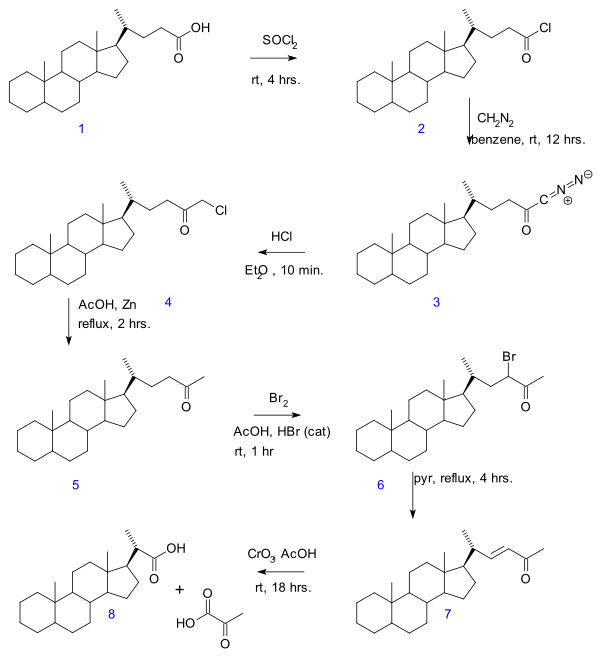加拉格尔-霍兰德降解反应
外观
加拉格尔-霍兰德降解反应(Gallagher-Hollander degradation)于1946年报导,是将直链脂肪族羧酸降解为少两个碳的羧酸的方法。[1]
原始方法是通过一系列反应将胆汁酸(1)降解为bisnorcholanic acid (8)。过程为:
- (1) 与亚硫酰氯反应生成酰氯(2);
- (2) 用重氮甲烷处理得到重氮酮(3);
- (3) 用盐酸处理生成α-氯代酮(4);
- (4) 用锌/乙酸还原为甲基酮(5);
- (5) 发生α-溴化生成溴代酮(6);
- (6) 在吡啶中消除溴化氢得到不饱和酮(7);
- (7) 最后(7)用三氧化铬氧化,发生C–C键断裂,得(8)。

参见
[编辑]参考资料
[编辑]- ^ Vincent P. Hollander and T. F. Gallagher. Partial Synthesis of Compounds Related to Adrenal Cortical Hormones. VII. Degradation of the Side Chain of Cholanic Acid. J. Biol. Chem. 1946, 162: 549–554 [2009-10-11]. (原始内容存档于2009-01-07).
